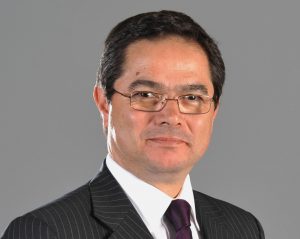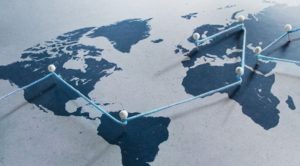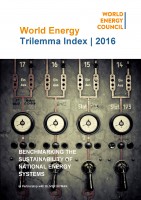Dr Vargas has been Chairman of the Energy Commission for Regional Integration (CIER) and has held several managerial positions in many companies in the electric sector. Before joining CODENSA in 2006 he held the post of CEO of the Bogota Power Company. Professionally trained as a lawyer, and also a university professor. He has served as an Ambassador to the European Union and as the Permanent Representative of Colombia to the World Customs Organisation.
During your time as a past Chair of Latin America...what 3 takeaways do you believe you could replicate on a wider, more global level, as Chair of Communications and Strategy for the Council?

In the Latin American region, we created an annual regional event to have one time each year were the leaders of the region could gather and to serve the Council and to present its content enabling dialogue which can influence public policy.
As Vice Chair, I believe we need to have a better communications strategy at a regional level. This is the key item which will enable an adequate roll out and impact of our content. The communications strategy needs to be a lot more focused on the training of member committees, better development of communication tools such as presentation templates to equip them to successfully undertake media outreach in their own regions, in order to adequately support the positioning of the Council and its content and activities.
What vision do you have for a sustainable strategy which will shape/ enhance the Council's Mission over the next three years of your tenure?
Our organisation needs to be able to grow based on its strengths. Our greatest strength is our global presence and we need to have a strategy that enables us to leverage on this and continue to grow. I believe the Council needs to focus on the quality of our deliverables. This means we should focus on a few deliverables, but of which are of the highest quality. We need to continue advancing the positioning of the Council in becoming a reference point for the global energy sector. The Council should be the source of inspiration for policymakers around the world, and therefore we need to deepen our work on collecting and documenting case studies from around the world.
You were also previously Chairman of the Energy Commission for Regional integration (CIER). How do you see regional integration in Latin America progressing over the next five years?
We can look at this aspect from two lenses. The first one being the development of studies over the next five years which will help drive the integration processes. Secondly, the actual progress of integration projects during this period.

Different studies are being formulated which are seeking to analyse emerging issues related to integration in Latin America. Some of them are re focuses on the role of integration as a factor which will enable the adequate integration of renewables to the regional energy mix. Similarly, others are focusing on the regions’ vulnerability to climate change and how this will impact hydro, solar and wind resources and what role integration can play to ensure the resilience of regional energy systems. Some others look at even more longer term perspectives such as the integration of Sinea and Mercosur systems. However, these are just intended to keep the integration debate on the table, since not even Sinea is advancing as much as we had expected.
In relation to integration projects, over the next five years, the focus should be maximising the use of existing infrastructure and interconnections. Currently they are only being used for occasional energy exchanges, with the percentage use being very low at around 4%. There needs to be progress on making sure exchanges take place in a more permanent way in the long run. To advance on this CIER is working on real time monitoring of interconnection use and of the regional energy markets.
However, the possibility of integration between Chile and Argentina is increasing, many with many projects likely to be based on renewable generation being installed in Chile. Bolivia has a very clear policy to advance on the energy integration of the region and sees itself as the energy hub for Latin America. They are advancing with binational generation projects with Brazil as well as other interconnections with neighbouring countries.
Excluding the fact that each region faces differing priorities...in your opinion what is the biggest challenge facing the energy sector on a global level, and what role do you think the World Energy Council plays in addressing that challenge?

I believe the greatest challenge is in developing sustainable energy systems. By sustainable I mean energy systems which can balance the need for secure reliable energy, which minimises its environmental impacts and advance on energy access and competitive prices for energy service. At the Council, we refer to this framework as the energy trilemma. As an organisation, we need to deepen our knowledge on the trilemma and understand the evolution of this concept through the lens of the energy transition the sector is facing and continue diffusing its importance and relation to public policies, which are key to be able to deliver sustainable energy systems.
ENDS
-
The Council will be launching its Energy Scenarios for the LAC region on 31. May. Listen to the discussion during the launch webinar on http://streaming.bnamericas.com/
-
Learn more about energy scenarios Modern Jazz, Unfinished Symphony, and Hard Rock: World Energy Scenarios 2016 - The Grand Transition
-
CHILE’S TRILEMMA SOLUTIONS : Hydro, power auctions and regional integration in World Energy Focus magazine, June 2016
-
REGIONAL INTEGRATION in World Energy Focus magazine,
"All over the world, countries are connecting up their electricity networks. In the media we hear a lot about “decentralisation”, microgrids, off-grid solutions. But there is another trend going on as well: regional interconnection. We report from Latin America, Asia, Africa and Europe about all the networks that are being linked up."





